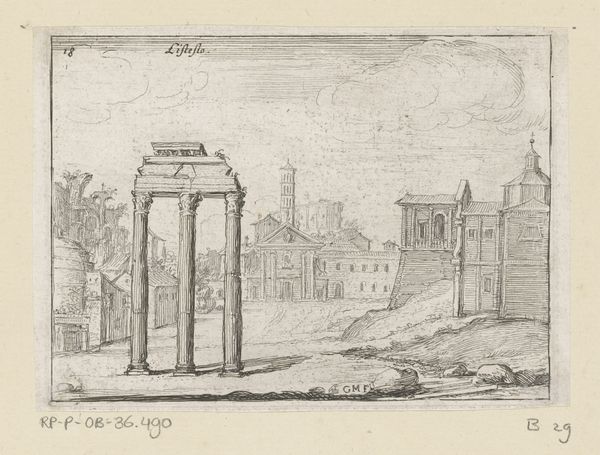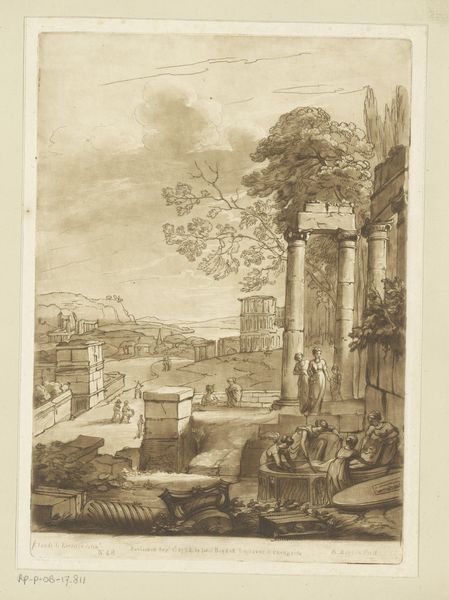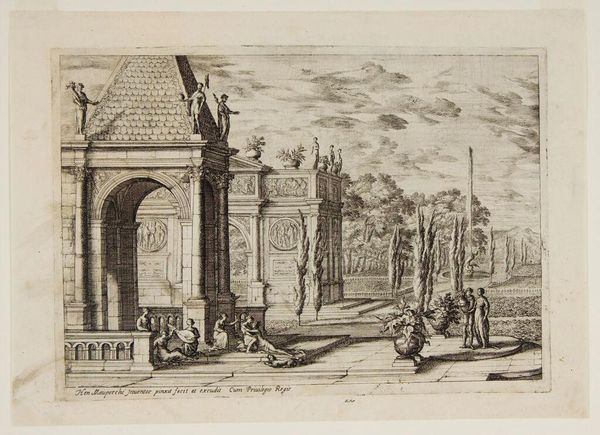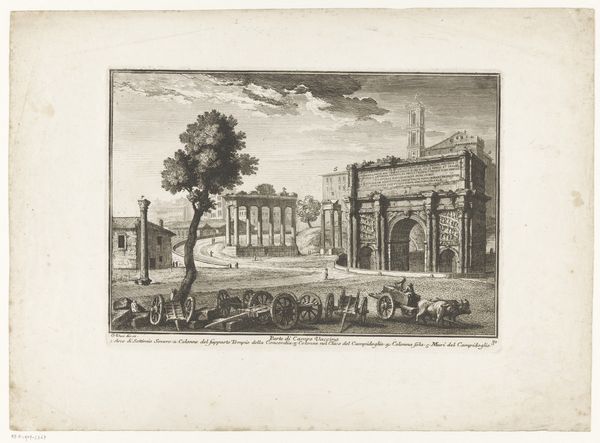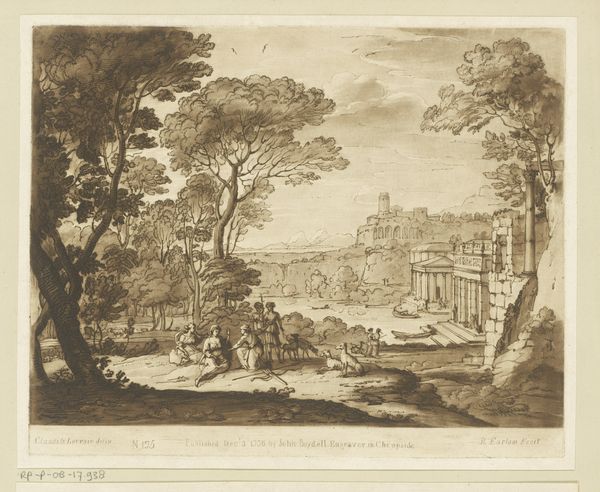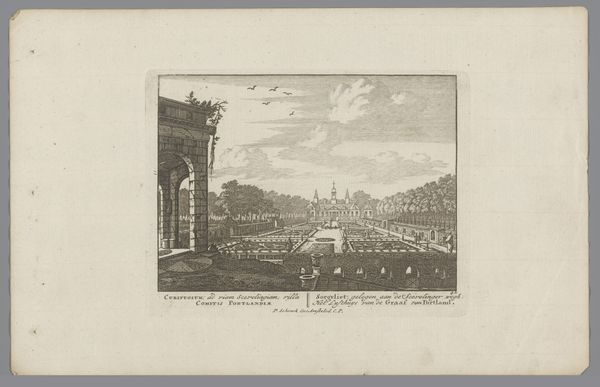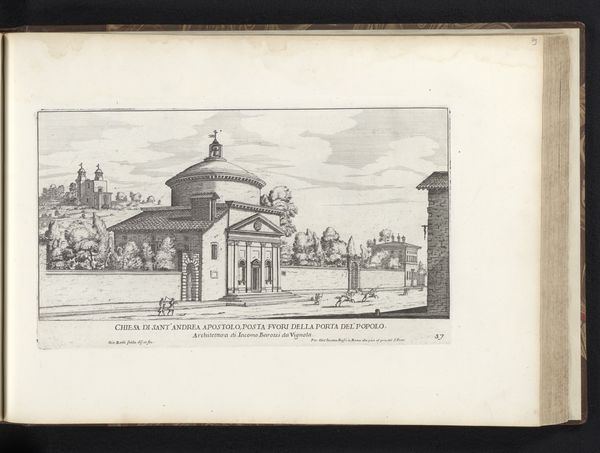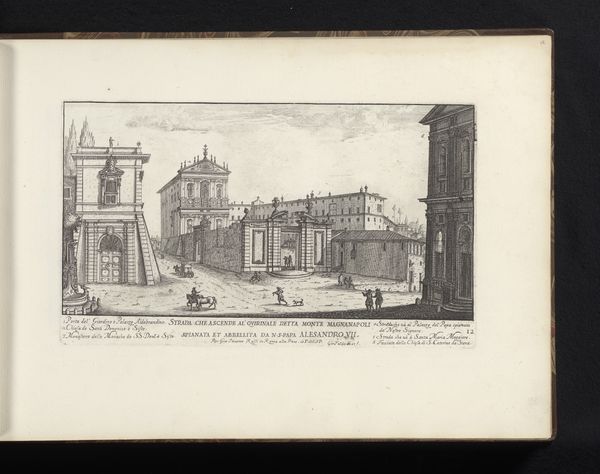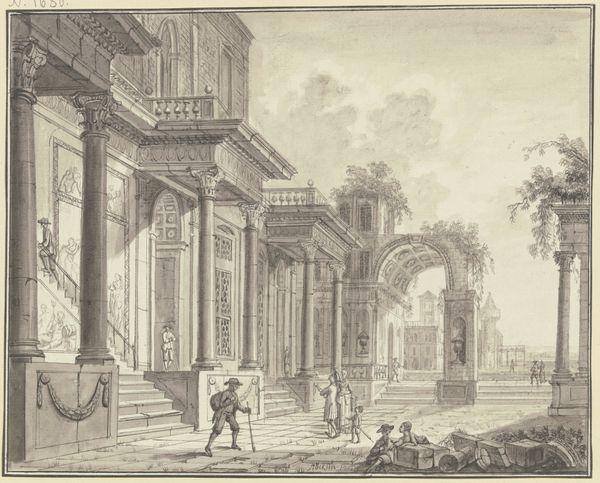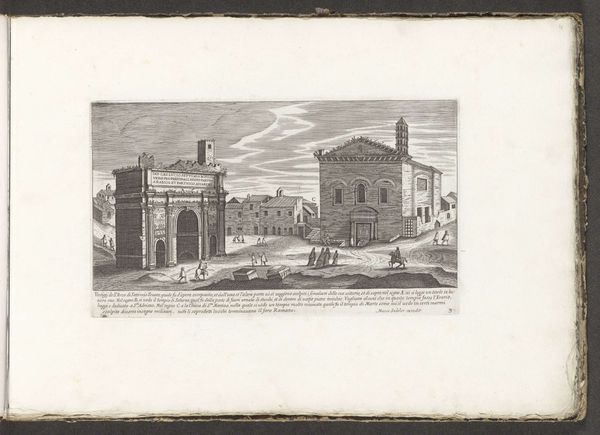
drawing, paper, ink
#
drawing
#
baroque
#
landscape
#
classical-realism
#
perspective
#
paper
#
ink
#
cityscape
#
academic-art
#
italian-renaissance
Dimensions: height 200 mm, width 255 mm
Copyright: Rijks Museum: Open Domain
Editor: This is "Italianiserend landschap met Romeinse ruïnes," or "Italianizing Landscape with Roman Ruins," by Hendrik Carré II, made sometime between 1706 and 1775. It’s an ink drawing on paper. I'm immediately struck by the dominance of architecture and the clever use of perspective. What stands out to you in terms of form? Curator: I'm particularly interested in how the artist utilizes the linear perspective to create depth, directing the eye through the archways and into the landscape beyond. Notice how the orthogonals converge towards a vanishing point, anchoring the composition. Editor: Absolutely, it really does draw you in. Are there any aspects of the composition or the artist's technique that reveal artistic intent? Curator: The use of line weight and detail is crucial here. Observe how Carré employs finer, more delicate lines in the background to suggest distance, while the foreground architecture is rendered with heavier, more defined strokes, lending it a sense of solidity and presence. Also, consider the negative space. The sky is not merely empty; its varied rendering contributes to the depth and atmospheric perspective of the drawing. How might that affect the structure? Editor: I guess it allows the detailed foreground to pop a bit more; focusing our eye on the classical structure? Do you see an underlying visual language? Curator: Indeed. By closely analyzing these formal elements – line, perspective, space, light – we start to understand the structure and its possible intended representation, rather than any strict historicism. A romantic ideal through rigorous construction, perhaps? Editor: Interesting! So focusing on these core elements reveals so much about this "Italianizing Landscape," rather than solely seeking cultural context. Curator: Precisely. Formal analysis encourages a dialogue directly with the artwork. A deep focus on line and construction to extract that message. Editor: Thanks, that's really expanded how I can approach analyzing drawings!
Comments
No comments
Be the first to comment and join the conversation on the ultimate creative platform.
